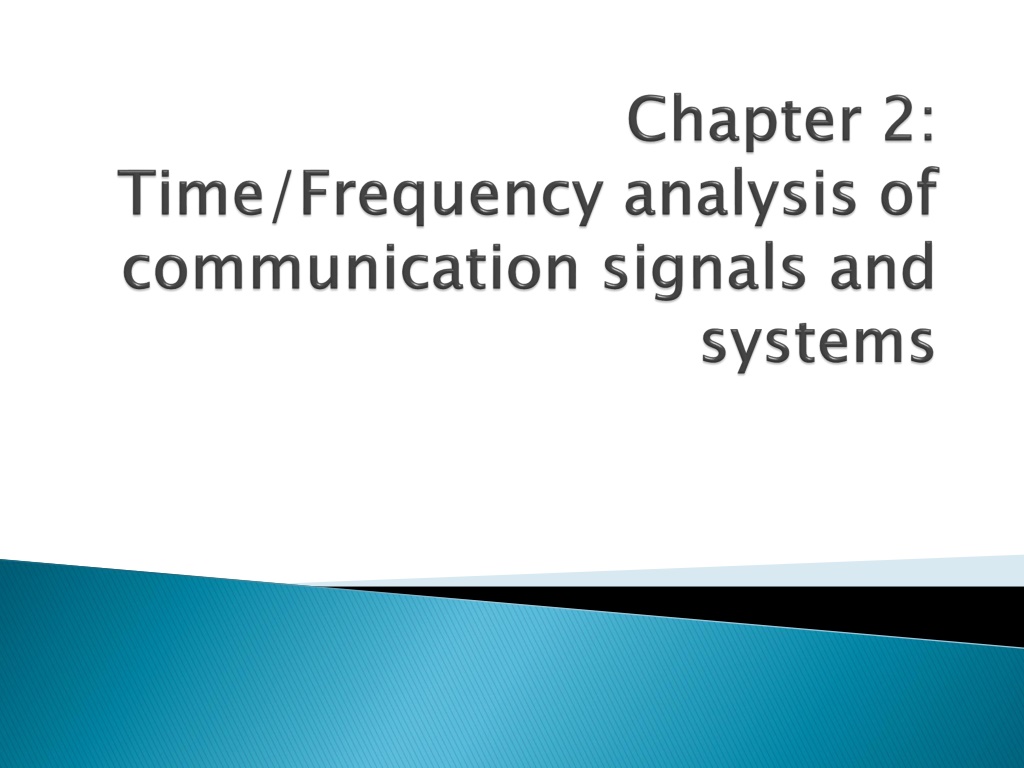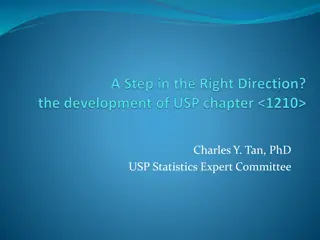
Understanding Signal Transmission and Systems
Explore the significance of carriers, signal power, bandwidth, Fourier Transform, Parseval's Theorem, and input-output systems in the context of signal processing and communication. Learn about linear vs. non-linear systems and the fundamental principles governing signal analysis and transmission.
Download Presentation

Please find below an Image/Link to download the presentation.
The content on the website is provided AS IS for your information and personal use only. It may not be sold, licensed, or shared on other websites without obtaining consent from the author. If you encounter any issues during the download, it is possible that the publisher has removed the file from their server.
You are allowed to download the files provided on this website for personal or commercial use, subject to the condition that they are used lawfully. All files are the property of their respective owners.
The content on the website is provided AS IS for your information and personal use only. It may not be sold, licensed, or shared on other websites without obtaining consent from the author.
E N D
Presentation Transcript
Carrier x(t) = A cos( c t + ) Carrier is strong and stable sinusoidal signal Carrier transports information text, email) across the world information (audio, video, Why is the carrier required? Audio and video signals cannot travel over large distances since they are weak A carrier is like a plane which transports passengers over long distances
General equation for signal power signal power Px For periodic signals, integration is over one period: For sinusoidal signals: x(t) = A cos( c t + ) Power Px= A2/2
Signal bandwidth maximum frequency and minimum frequency Example : x(t) = 5 cos( t + ) + 10 sin( t + ) Maximum frequency= 2400 rad./s Minimum frequency= 1500 rad./s Hence, bandwidth = 2400-1500 = 900 rad./s Signal bandwidth is the difference between its Commonly used signals Audio (Speech, Music) has 20 KHz bandwidth Video has 5 MHz bandwidth
Frequency content or bandwidth of a signal x(t) is estimated by Fourier Transform (FT) Fourier Transform (FT) The spectrum by Inverse signal can Inverse Fourier be Fourier Transform recovered Transform (IFT) from its (IFT)
A periodic signal x(t) has discrete spectrum existing only at frequencies of n 0, n an integer: discrete spectrum, The spectrum by the Fourier signal can be recovered series from its Fourier series
Parsevals theorem Parseval s theorem for signal energy Ex Power relation for periodic signals
Input-output system Types of systems Linear systems (ex. resistor) Non-linear systems (ex. transistor)
Linear systems obey the law of superposition superposition Time domain input/output relation Frequency domain input/output relation
Nonlinear systems do not obey superposition Time domain input/output relation (example) Frequency domain input/output relation (above )example
Discrete Fourier Transform (DFT) Inverse Discrete Fourier Transform (IDFT) Time-frequency relation in DFT w = 2 /(N t)
N point circular convolution y(n) = x(n) N h(n) = Shift is done circularly, not linearly All sequences (x,h,y) are of length N Very convenient for computer usage N is usually a power of 2
Step1: Obtain the N-point DFTs of the sequences x(n) and h(n) Step2: Multiply the two DFTs X(k) and H(k), for k = 0, 1, 2 N-1 Step3: Obtain the N-point IDFT of the sequence Yk), to yield the final output y(n)
FFT is a fast way to compute DFT N-point DFT is slow to compute Number of computations is N2 Radix-2 (N is power of 2) FFT is most efficient Number of computations is N log2N Example: For N = 64 => DFT requires 64 x 64 = 4096 computations FFT requires 64 x 6 = 384 computations
Number of computations using DFT Step 1: 2N2 Step 2: N Step 3: N2 Total computations = 3N2 + N T Number of computations using FFT Step 1: 2N log2N Step 2: N Step 3: log2N Total computations = 3 log2N + N













